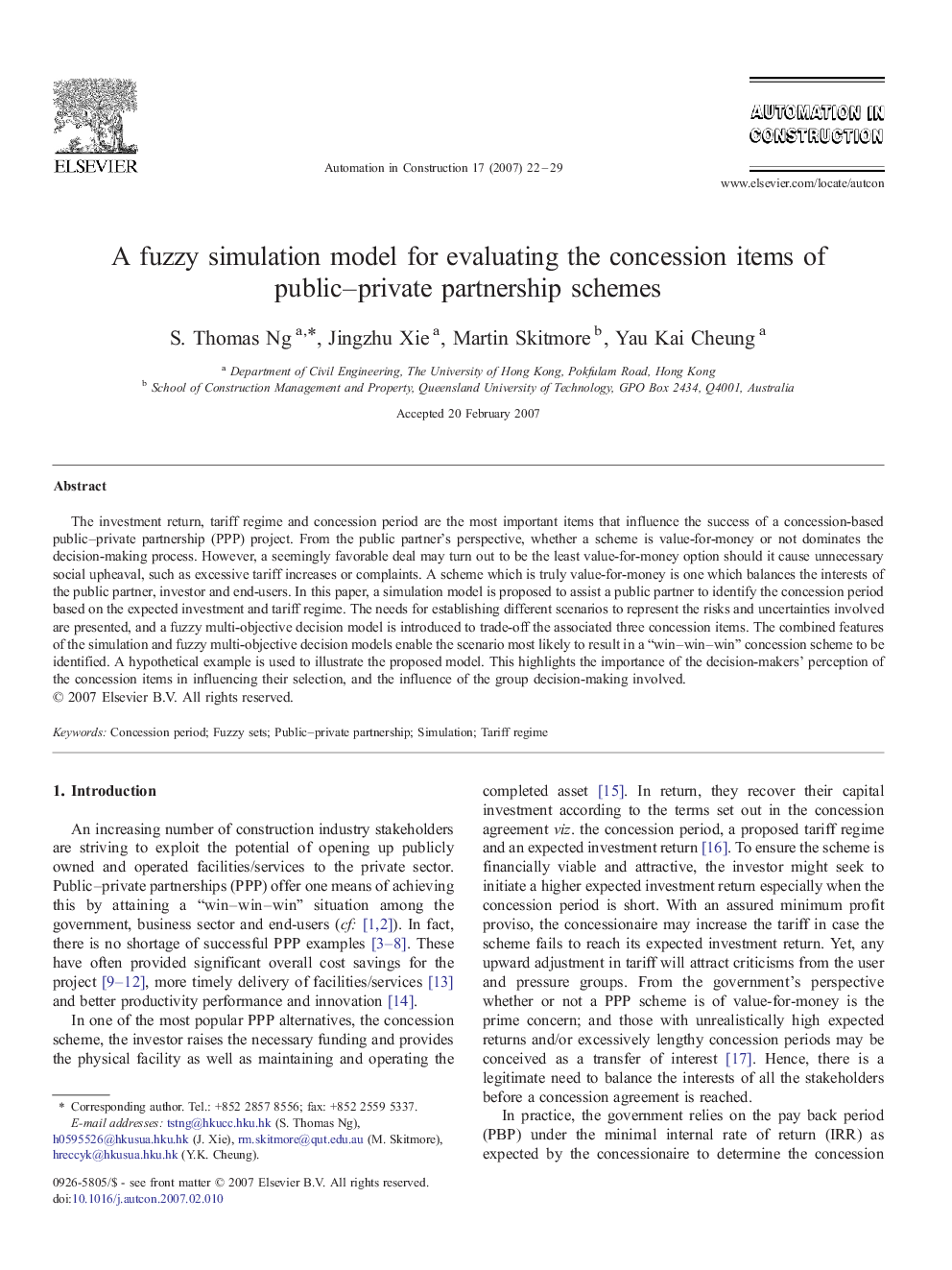| Article ID | Journal | Published Year | Pages | File Type |
|---|---|---|---|---|
| 247634 | Automation in Construction | 2007 | 8 Pages |
The investment return, tariff regime and concession period are the most important items that influence the success of a concession-based public–private partnership (PPP) project. From the public partner's perspective, whether a scheme is value-for-money or not dominates the decision-making process. However, a seemingly favorable deal may turn out to be the least value-for-money option should it cause unnecessary social upheaval, such as excessive tariff increases or complaints. A scheme which is truly value-for-money is one which balances the interests of the public partner, investor and end-users. In this paper, a simulation model is proposed to assist a public partner to identify the concession period based on the expected investment and tariff regime. The needs for establishing different scenarios to represent the risks and uncertainties involved are presented, and a fuzzy multi-objective decision model is introduced to trade-off the associated three concession items. The combined features of the simulation and fuzzy multi-objective decision models enable the scenario most likely to result in a “win–win–win” concession scheme to be identified. A hypothetical example is used to illustrate the proposed model. This highlights the importance of the decision-makers’ perception of the concession items in influencing their selection, and the influence of the group decision-making involved.
